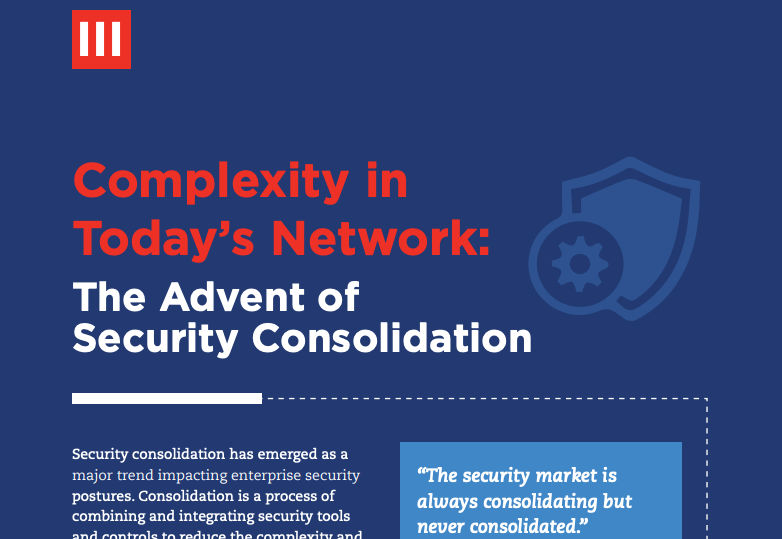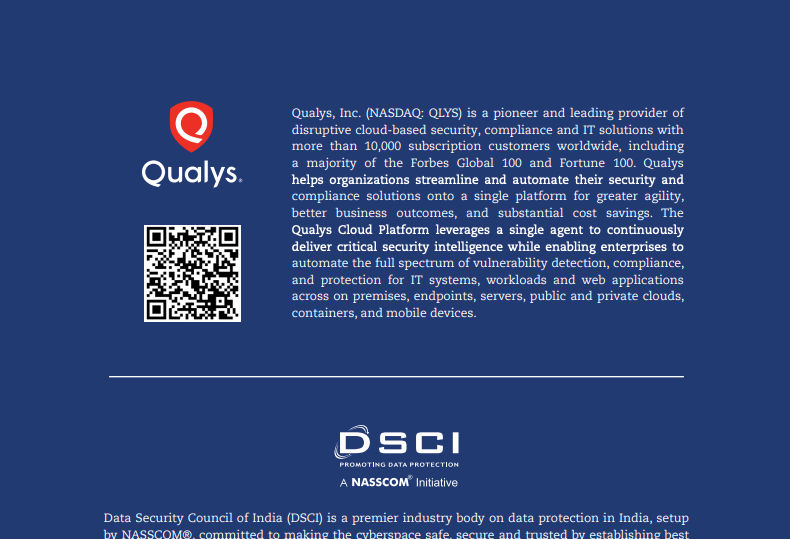Complimentary DSCI-Qualys Report
Cybersecurity Consolidation
Enabling a competitive edge and offering opportunities
This collaborative report between DSCI and Qualys discusses the modern attack surface. It focuses on the significant factors driving cybersecurity consolidation, which include manageability, uniform operation, scalability, quick response, reduced dependencies, and more.
The report goes step-by-step through the critical elements of consolidation from a pragmatic view, with many examples of consolidation best practices. These fundamental elements include asset management, threat and vulnerability management, patch management, compliance, endpoint detection & response, and more.
Finally, the report concludes with a discussion of a best-of-breed approach versus a delivery and innovation approach. And concludes that security consolidation is the fundamental strategy behind achieving the advantages of consolidation.
Get your copy of this report that helps prospective buyers and key decision-makers evaluate cybersecurity platforms in the context of taking a consolidated approach to cybersecurity.
Table of Contents
- Current Digitalization Context
- Modern Attack Surface
- Complexity in Today’s Network: The Advent of Security 5 Consolidation
- Major Factors Driving Cybersecurity Consolidation
- Dimensions of Security Consolidation
- Architectural Level
- Operational Level
- Technology Acquisition Level
- OEM Level
- Key Elements of Security Consolidation
- Cybersecurity Asset Management (CSAM)
- Threat and Vulnerability Management (TVM)
- Patch Management (PM)
- Endpoint Detection & Response (EDR)
- Extended Detection & Response (XDR)
- Email Security
- Compliance
- Cloud / Container Security
- Web Application Security (WAS)
- IT/OT Convergence
- Vendor Consolidation
- Security Platformization: A New Avenue for Security Consolidation
- Futureproofing Cybersecurity for the Enterprise
- Innovation vs. Delivery
See Full Report
By submitting this form, you consent to Qualys' privacy policy.


